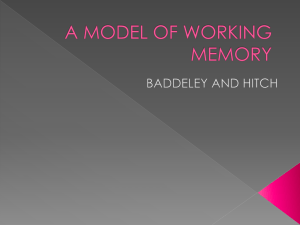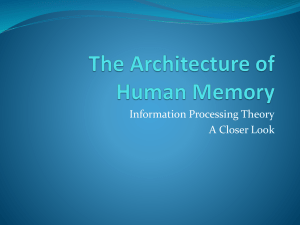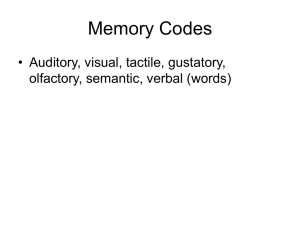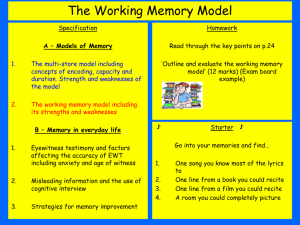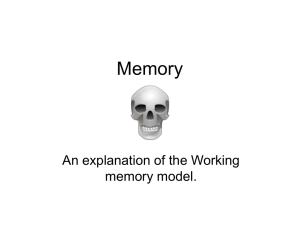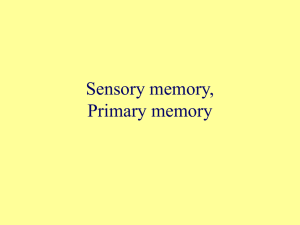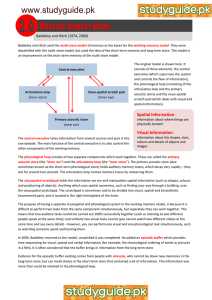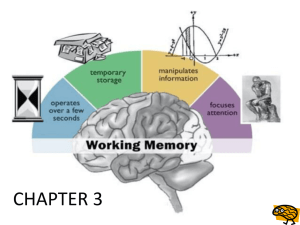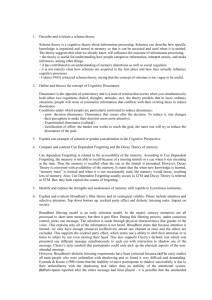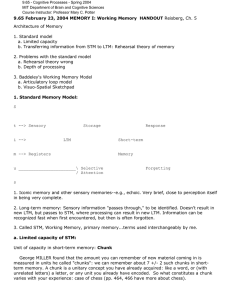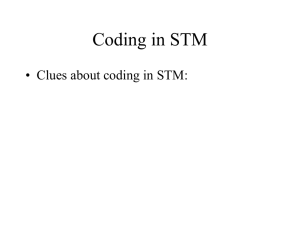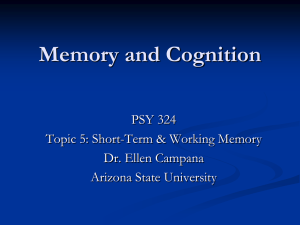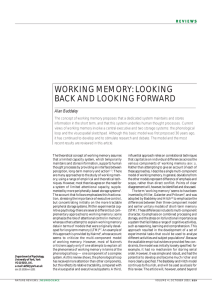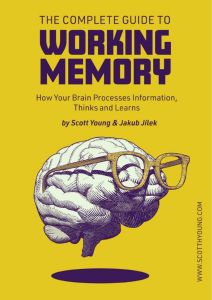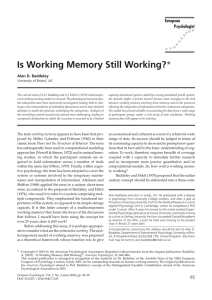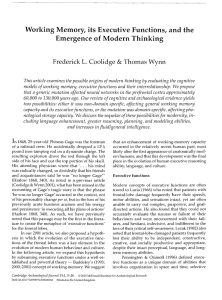Memory I
advertisement
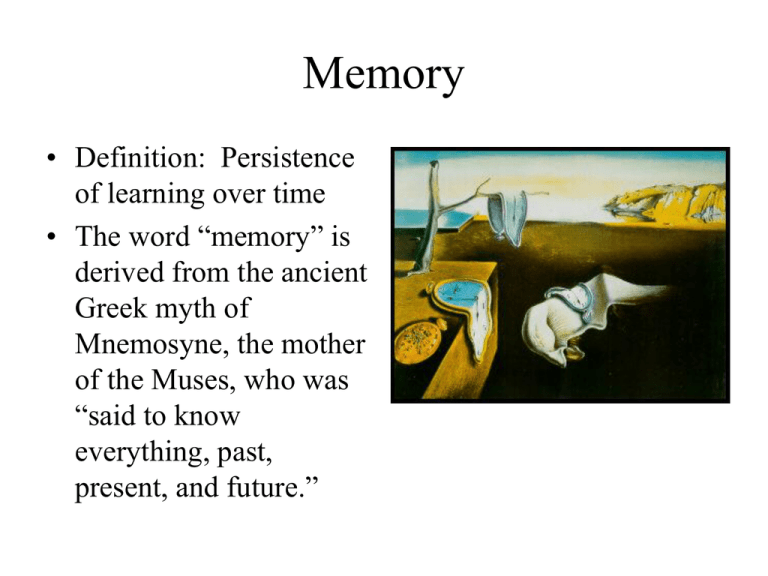
Memory • Definition: Persistence of learning over time • The word “memory” is derived from the ancient Greek myth of Mnemosyne, the mother of the Muses, who was “said to know everything, past, present, and future.” Memory Extremes • Memory Loss - The cases of H.M. and Clive Wearing Supernormal Memory • Photographic Memory The Case of S. (Solomon V. Shereshevskii); Luria (1968) “The Mind of a Mnemonist” • Hyperthymesia – case of H.K. Memory Processes “Memory” R. Magritte Memory Involves 3 Stages of Information Processing • Encoding • Storage • Retrieval Dualist Theories of Memory • William James – “Primary” and “Secondary” memory • Waugh & Norman (1965) • Atkinson-Shiffrin (1971) Atkinson & Shiffrin Modal Model 3 memories: Sensory STS LTS Information Flow Between Memory Systems • • • • Sensory-STS Sensory-LTS STS-LTS LTS-STS Characteristics • Structural storages • Control processes • Information loss and decay e.g., Ebbinghaus Curve Evidence for Dualist Theories: Serial Position Curve Short-Term (STM) or Working Memory • • • • A temporary storage of information Central to most cognitive activities Identified with consciousness? Memory workspace handles most of our complex intellectual activities • Freud - "Mystic Writing Pad" Classic Research on Working Memory: Capacity Issues Memory Span • Number of items in a row that can be recalled • Ebbinghaus tradition • "digit span task" Miller (1956) - Magical Number Seven, Plus or Minus 2 • Chunk - basic unit of memory storage in STM • Chunking • FBIJFKYMCAIRS • FBI JFK YMCA IRS Number of Items, or Amount of Information? • Alvarez & Cavanagh (2004) – complexity of objects determines how much is stored Brown - Peterson (1958; 1959) Distracter Task • Examined forgetting in STM • S's study 3 letters A Z M - then given a number (453) and count backwards by 3 Coding Information into Working Memory Auditory Code • Conrad (1963) study on letter recall • e.g., similar sounding letters difficult to recall • e.g., C, V, P (B,D given as errors) Pronunciation Code • a limit in terms of # items pronounced within 1.5 sec • e.g., cat, dog, car, red, bed, wall • synthesizer, crabcake, kangaroo, marvelous Visual Code • Posner & Keele (1967) letter matching experiment • AA – visual match • Aa – name match Semantic Code • Wickens et al. (1976) • PI (Proactive Inhibition) - previously learned material interferes with new learning • Release from PI - if the category of items shifted, then memory goes up again – Broccoli, Onion, Pepper – Tomato, Lettuce, Radish – Asparagus, Cauliflower, Cabbage – Rose, Daisy, Tulip Retrieval from Working Memory • • • • Sternberg (1969, 1975) P given memory set (1 or 3 digits) P given memory probe digit RT decision as to whether probe digit is in memory set • Possibilities: – Parallel scan – Serial scan • Self-terminating • Exhaustive Baddeley’s Model of Working Memory • Working memory viewed as having a number of components (Baddeley, 1986) • Viewed as a workbench where information is temporarily held, manipulated and utilized during cognitive tasks 4 Components • • • • Phonological Loop Visuospatial Sketch Pad Episodic Buffer Central Executive Phonological Loop • Items stored in terms of how they are articulated - related to sound • Phonology - linguistic description of speech sounds • Phonological loop is limited; memory trace decays within 2 sec • Imaging studies: left frontal and temporal lobes activated; parietal lobe Visuospatial Sketchpad • Visual and spatial information is stored • Limited-capacity • Imaging studies: right hemisphere; occipital lobe; frontal lobe Episodic Buffer • Temporary store where info from phonological loop, visuospatial sketchpad, and long-term memory can be stored • Limited capacity Central Executive • Is a supervisor; integrates information across phono loop, sketchpad, and episodic buffer • Coordinates strategies of information coding into and out of WM • Allocates capacity to appropriate processes • Coordinates transfer in and out of LTM • Imaging studies: frontal lobe Cognitive Neuroscience of Working Memory – Case Studies • Milner (1966) – case of H.M. – Hippocampus involved • Warrington & Shallice (1969) – case of K.F. Prefrontal Cortex • Appears to be involved in maintaining information in working memory • Primate research – delayed response memory task data • Infants – object permanence around 8 months • Other areas such as visual cortex, etc. also involved • Seems to be a distributed function
